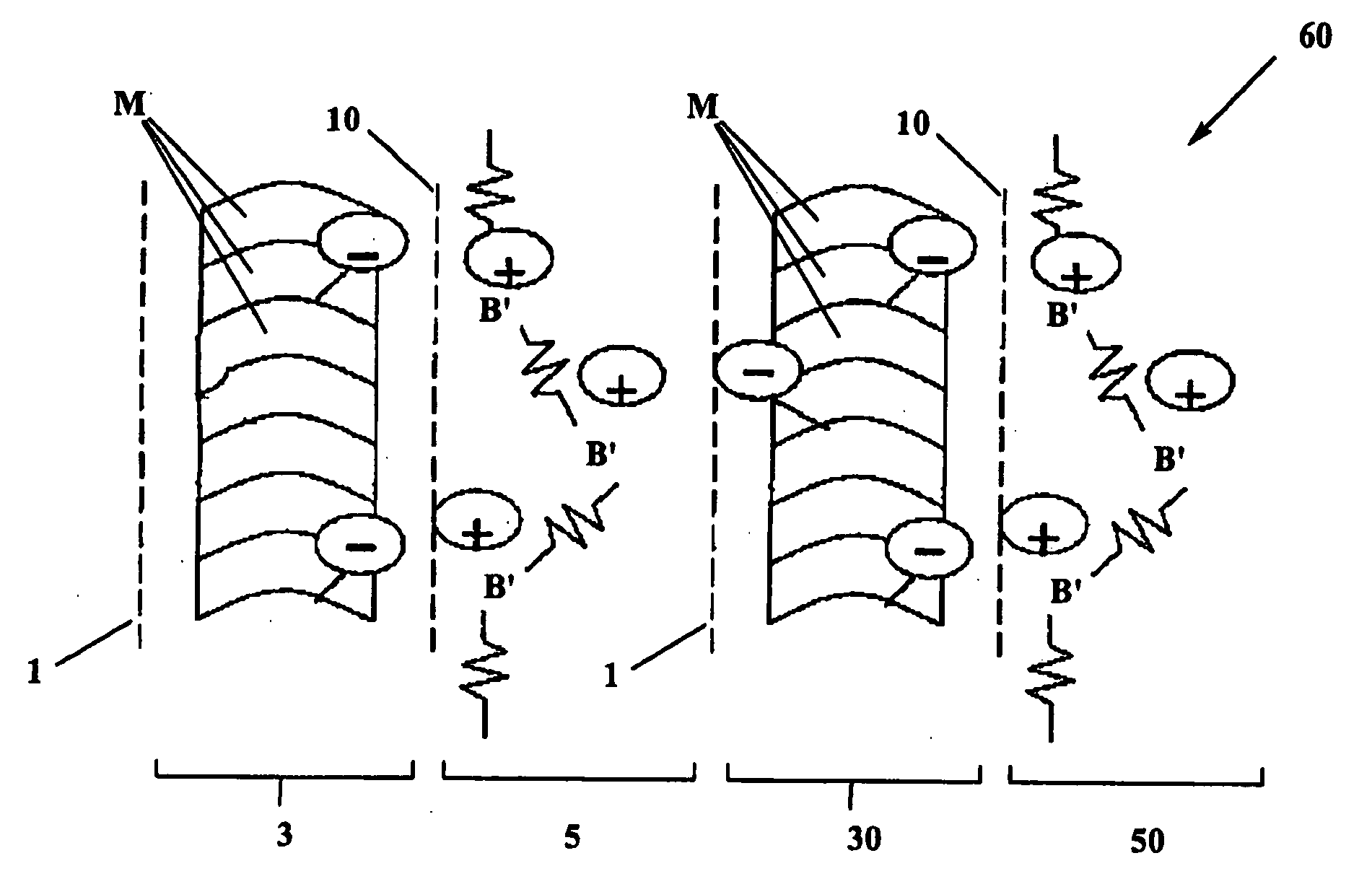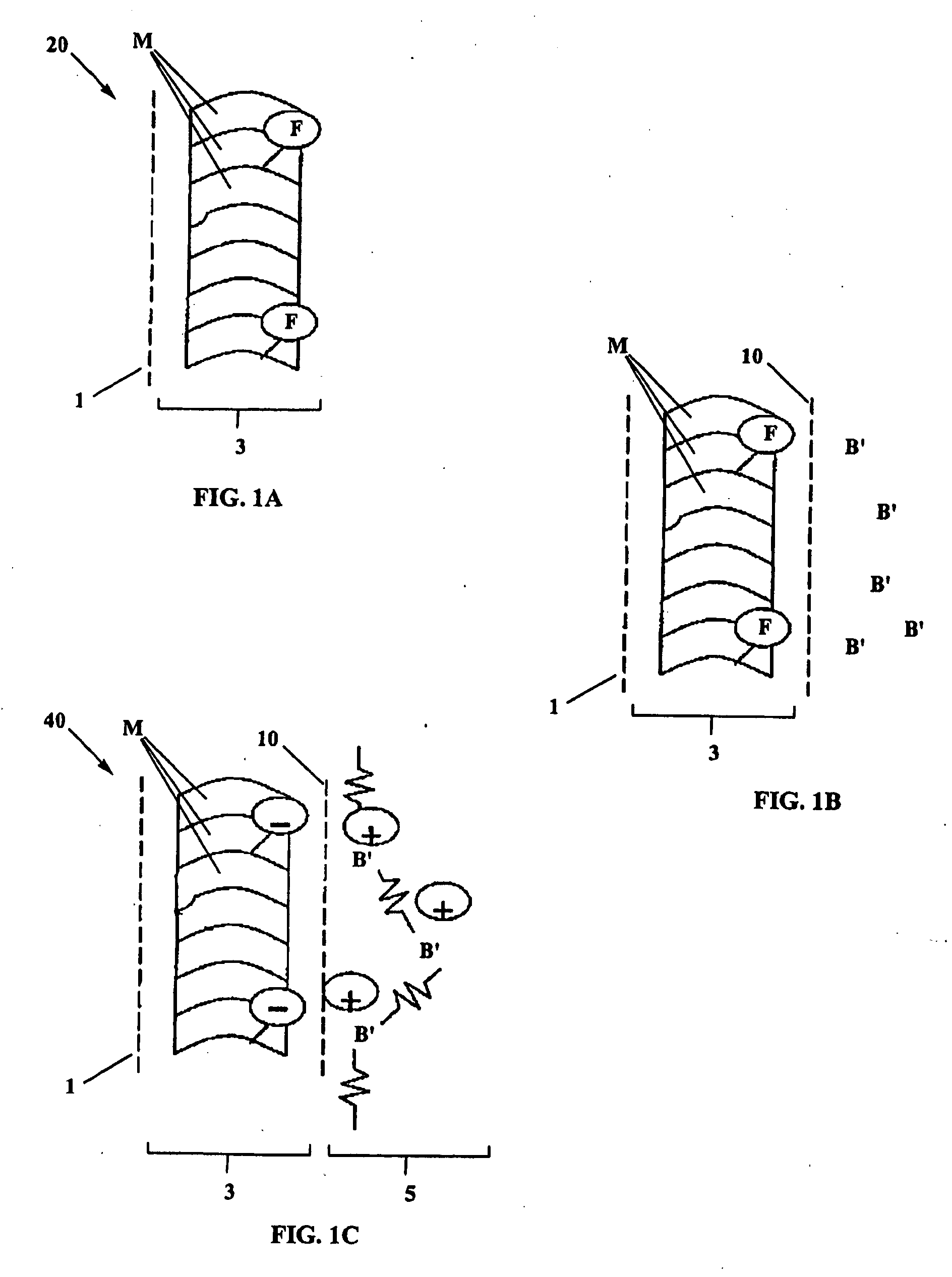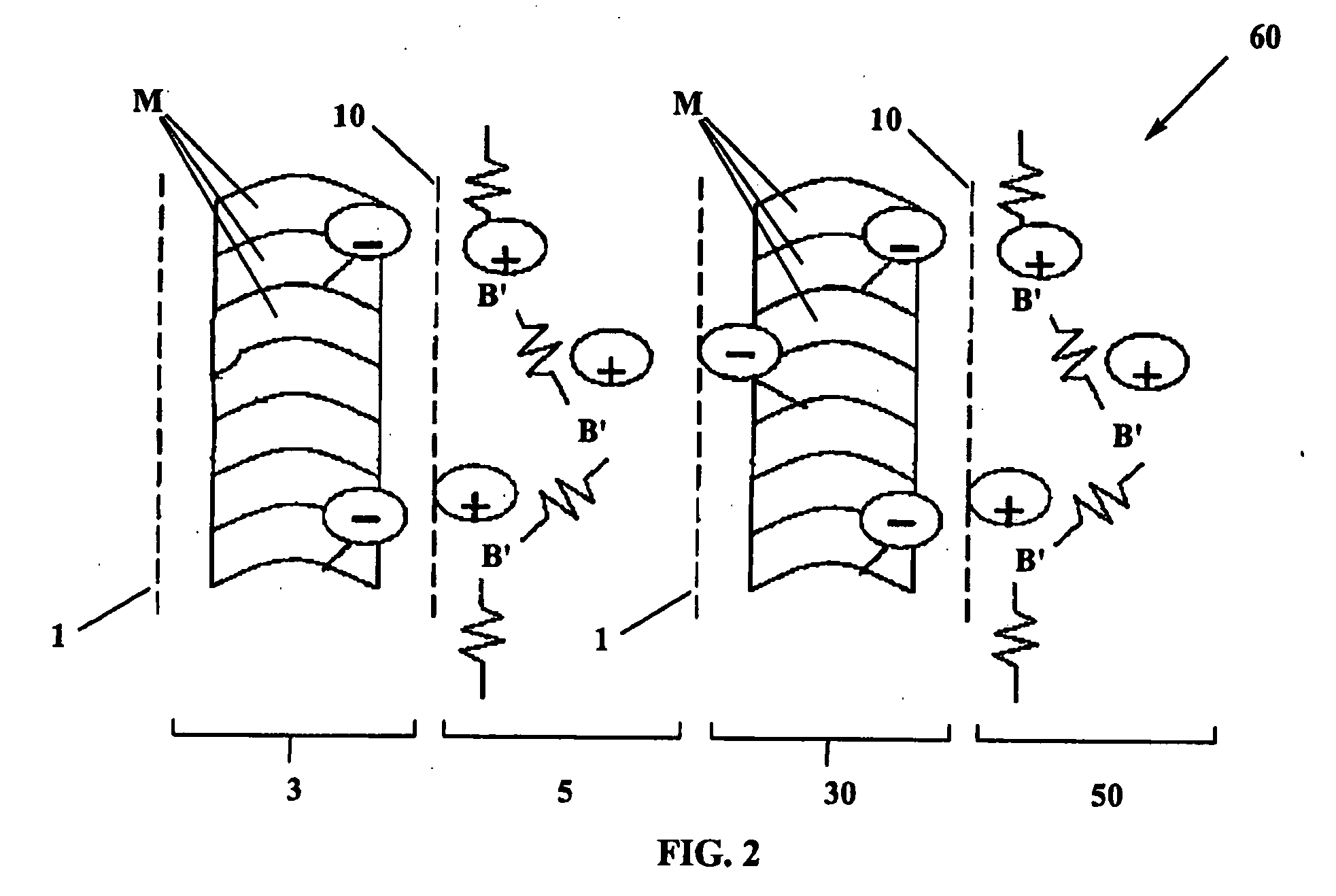Two-phase film materials and method for making
a two-phase film and composition technology, applied in the direction of polarizing elements, thin material handling, instruments, etc., can solve the problems of limited interaction strength between the layers of dye and polymer, unstable pva-iodine polarizing films and systems, and limited choice of optically active components in these films. , to achieve the effect of good optical and mechanical properties, high working characteristics
- Summary
- Abstract
- Description
- Claims
- Application Information
AI Technical Summary
Benefits of technology
Problems solved by technology
Method used
Image
Examples
example 1
Preparation of a Two-Phase Film Material
[0065] In the first step, a crystalline film of organic molecules is prepared. Distilled water is added to a flask with 10.0 g of sulfonated naphthoylene benzimidazole. The mixture is stirred with heating until complete dissolution. The final solution concentration is approximately about 7 to 15 mass % and, if necessary, excess water can be distilled off at a reduced pressure. Then the concentrate is applied onto a glass substrate. After the appearance of a liquid-crystalline mesophase, the film is ordered by moving an upper glass plate, which serves as an aligning instrument, relative to the lower glass substrate coated with the LLC film. Finally, the film is dried at a temperature of approximately 20° C. and at a relative humidity of 65%. The film has a thickness of about 0.5 μm and exhibits anisotropic optical properties.
[0066] A high-molecular-weight epoxy resin is synthesized as follows. A round-bottom flask equipped with a mechanical s...
example 2
Preparation of a Two-Phase Film Material
[0071] In the first step a crystalline film of organic molecules is prepared. Distilled water is added to a flask with 8.0 g of a mixture of sulfonated dyes including indanthrone, Perylene Violet, and Vat Red 14 in a ratio of 5:1:2. The mixture is stirred with heating until complete dissolution. The final concentration of the solution is 10%. If deemed necessary, excess water can be distilled off at a reduced pressure to achieve the appropriate concentrate. The concentrate is then applied onto a glass substrate. After the appearance of a liquid-crystalline mesophase, the film is ordered by moving an upper glass plate that serves as an aligning instrument relative to the lower glass substrate coated with the layer of LLC. Finally, the film is dried at a temperature of about 20° C. and at a relative humidity of 70%. The film has a thickness of approximately about 0.4 μm and exhibits anisotropic optical properties.
[0072] The substrate coated wi...
PUM
| Property | Measurement | Unit |
|---|---|---|
| molecular weight distribution | aaaaa | aaaaa |
| molecular weight distribution | aaaaa | aaaaa |
| mass % | aaaaa | aaaaa |
Abstract
Description
Claims
Application Information
 Login to View More
Login to View More - R&D
- Intellectual Property
- Life Sciences
- Materials
- Tech Scout
- Unparalleled Data Quality
- Higher Quality Content
- 60% Fewer Hallucinations
Browse by: Latest US Patents, China's latest patents, Technical Efficacy Thesaurus, Application Domain, Technology Topic, Popular Technical Reports.
© 2025 PatSnap. All rights reserved.Legal|Privacy policy|Modern Slavery Act Transparency Statement|Sitemap|About US| Contact US: help@patsnap.com



